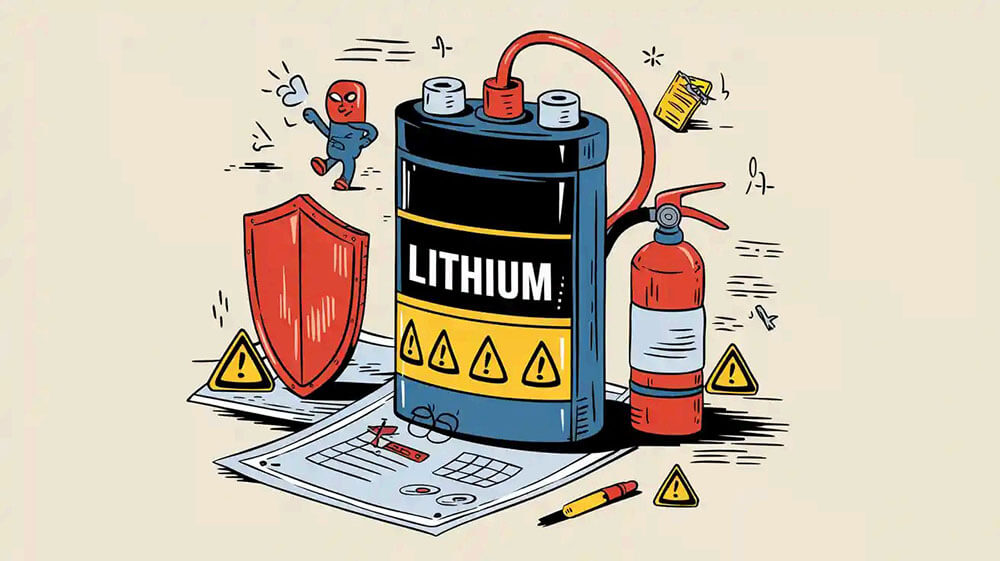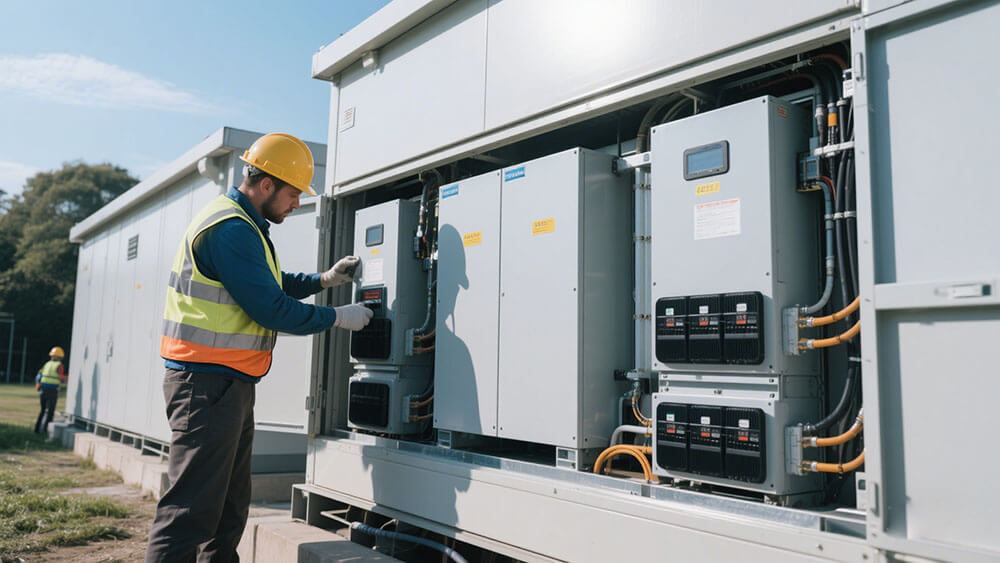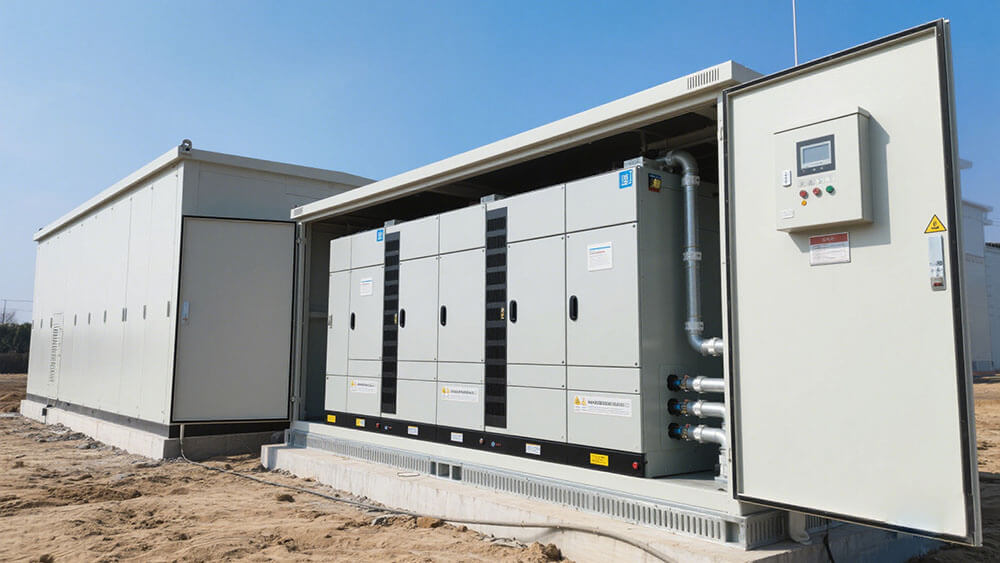Contents

NFPA 855, developed by the National Fire Protection Association, serves as a vital framework for ensuring the safe deployment of lithium battery systems. Safety concerns like thermal runaway or explosions highlight the need for strict adherence. In recent years, incidents involving lithium batteries have caused:
Energy storage systems: 65 injuries, 4 fatalities
Consumer products: 2,178 injuries, 199 fatalities
Electric vehicles: 192 injuries, 103 fatalities
Micro-mobility devices: 1,982 injuries, 340 fatalities
These statistics underline the importance of NFPA 855 lithium battery compliance to protect lives and infrastructure. You can explore custom solutions tailored to your industry from Large Power.
Key Takeaways
NFPA 855 gives key safety rules for lithium battery systems.
These rules help with safe setup and use in many industries.
Correct setup and care of these systems stop dangers like fires.
Checking for risks helps find problems and add safety steps.
This keeps people and property safe from harm.

Part 1 Overview of NFPA 855 Standards
1.1 Purpose and Scope of NFPA 855
NFPA 855 serves as the standard for the installation of stationary energy storage systems, addressing critical aspects such as design, construction, installation, commissioning, operation, maintenance, and decommissioning. Its primary goal is to ensure battery safety and mitigate risks associated with energy storage systems (ESS). These systems, which store energy for future electrical supply, play a pivotal role in industries like medical, robotics, and security systems technology.
Key annexes within NFPA 855 provide detailed guidance:
Annex B: Explores hazards specific to battery energy storage systems.
Annex C: Offers fire-fighting considerations tailored to ESS installations.
Annex D: Reviews engineering storage system technologies.
Annex F: Provides a historical perspective on storage battery systems.
Chapter 4 emphasizes safety measures, including hazard mitigation analyses to address failure modes such as toxic gas release or thermal runaway. These provisions ensure compliance with NFPA 855, safeguarding both personnel and infrastructure in sectors like infrastructure transportation and industrial operations.
1.2 Key Definitions and Terminology in NFPA 855
Understanding the terminology within NFPA 855 is essential for effective implementation. The standard defines an energy storage system as a device capable of storing energy for future electrical supply. This encompasses various technologies, including lithium-ion batteries, LiFePO4 Lithium batteries solutions, and emerging innovations like solid-state batteries applications.
Key terms include:
Thermal Runaway: A chain reaction within a battery that can lead to overheating and fire.
Hazard Mitigation Analysis: A systematic evaluation of potential risks and failure modes.
Fire Safety: Measures designed to prevent and control fires in ESS installations.
These definitions form the foundation for compliance with NFPA 855, ensuring that safety standards are met across diverse applications, from consumer electronics devices to large-scale industrial systems.
1.3 Types of Energy Storage Systems Covered by NFPA 855
NFPA 855 encompasses a wide range of energy storage systems, each tailored to specific applications. These include:
Lithium-Ion Batteries: Known for their high energy density (e.g. NMC 160–270 Wh/kg) and cycle life (1,000–2,000 cycles), they are widely used in medical, robotics, and security systems.
LiFePO4 Lithium Batteries: Offering superior cycle life (2,000–5,000 cycles) and safety features, they are ideal for industrial and infrastructure applications.
Solid-State Batteries: Emerging as a next-generation solution with energy densities of 300–500 Wh/kg, these batteries promise enhanced safety and performance.
Lithium-Polymer Batteries: Lightweight and versatile, they are commonly used in consumer electronics.
By addressing the unique characteristics of each Energy Storage System(ESS) type, NFPA 855 ensures that installations meet stringent safety standards. This comprehensive approach supports industries in achieving compliance while optimizing performance and reliability.

Part 2 Key Provisions for NFPA 855 Lithium Battery Installation and Safety
2.1 Installation Requirements for Lithium-Ion Batteries
Proper installation of lithium-ion batteries is critical to ensuring the safety and efficiency of energy storage systems. NFPA 855 outlines comprehensive safety standards that address the design, placement, and environmental considerations for these systems. You must ensure that installations comply with these standards to mitigate risks such as thermal runaway or fire.
Key installation requirements include:
Location and Spacing: Install lithium-ion battery storage systems in areas with adequate ventilation and spacing to prevent overheating. NFPA mandates a minimum clearance between battery units to reduce the risk of fire propagation.
Environmental Conditions: Maintain optimal temperature and humidity levels to prevent battery degradation. For instance, lithium-ion batteries perform best within a temperature range of 20°C to 25°C.
Fire Suppression Systems: Equip storage areas with fire safety measures, such as automatic sprinklers or clean agent systems, to control potential fires effectively.
Adhering to these requirements ensures compliance with NFPA 855 and enhances the safety of installations in industries like medical, robotics, and infrastructure from Large Power.
2.2 Safety Measures to Prevent Hazards
Implementing robust safety measures is essential to prevent hazards associated with lithium-ion batteries. NFPA 855 emphasizes proactive strategies to address potential risks, including thermal runaway, toxic gas release, and electrical faults.
Some critical safety guidelines include:
Hazard Mitigation Analysis: Conduct a thorough evaluation of potential failure modes, such as overheating or short circuits. This analysis helps identify vulnerabilities and implement preventive measures.
Monitoring Systems: Use advanced battery management systems (BMS) to monitor voltage, temperature, and state of charge in real-time. These systems can detect anomalies and trigger protective actions.
Emergency Response Plans: Develop and train personnel on emergency protocols to handle incidents effectively. This includes evacuation procedures and the use of fire suppression equipment.
The Bureau of Labor Statistics (BLS) highlights the importance of targeted safety measures. For example, understanding that 41% of fatal workplace injuries in 2011 were due to transportation incidents underscores the need for preventive strategies. Similarly, addressing musculoskeletal disorders, which account for nearly one-third of nonfatal injuries, can significantly enhance workplace safety.
By integrating these measures, you can ensure compliance with NFPA 855 and protect both personnel and assets in sectors like industrial and consumer electronics.
2.3 Compliance Guidelines for Energy Storage Systems
Compliance with NFPA 855 is not just a regulatory requirement but a critical step toward ensuring the safe operation of energy storage systems. The standard provides detailed guidelines for the design, installation, and maintenance of these systems.
Key compliance aspects include:
Battery Decommissioning Protocols: Follow proper procedures for the safe disposal of batteries to prevent environmental hazards.
Technology Selection: Opt for solid-state energy storage systems in enclosed applications due to their lower gas emissions upon failure.
Documentation and Training: Maintain detailed records of installation and maintenance activities. Train personnel on NFPA 855 requirements to ensure adherence to safety standards.
By adhering to these compliance guidelines, you can optimize the performance and reliability of energy storage systems while meeting regulatory standards. For customized solutions tailored to your industry, consider consulting with Large Power.

Part 3 Practical Applications of NFPA 855 in Energy Storage Systems
3.1 Residential Applications: Ensuring Home Safety
NFPA 855 plays a crucial role in enhancing safety for residential energy storage systems. Homeowners increasingly adopt lithium-ion batteries for solar energy storage, backup power, and energy efficiency. These systems, when installed according to NFPA 855, minimize risks such as fire or thermal runaway. Proper ventilation, fire safety measures, and adherence to spacing requirements ensure safe operation.
For example, a well-designed residential system includes fire suppression mechanisms and advanced battery management systems (BMS) to monitor performance. These features align with NFPA 855 standards, offering peace of mind to homeowners. By following these guidelines, you can ensure compliance with NFPA 855 while optimizing energy storage for residential use.
3.2 Commercial and Industrial Applications: Protecting Large-Scale Operations
In commercial and industrial settings, energy storage systems must meet stringent safety standards to protect assets and personnel. NFPA 855 provides a framework for addressing risks in large-scale operations. Industries rely on lithium-ion and LiFePO4 lithium batteries for their high energy density and long cycle life, making compliance with NFPA 855 essential.
A literature review highlights the role of NFPA 855 in improving safety and efficiency. It identifies overlooked safety failures and introduces risk assessment methodologies, such as event trees and quantitative evaluations. These practices enhance fire safety and operational reliability. For instance, industrial facilities benefit from robust hazard mitigation analyses and fire suppression systems, ensuring uninterrupted operations.
Role of NFPA 855 | Description |
|---|---|
Enhancing Safety | Establishes rigorous safety standards to prevent fires and hazards associated with ESS. |
Guiding Industry Practices | Serves as a benchmark for manufacturers and installers, ensuring compliance with best safety practices. |
Facilitating Regulatory Compliance | Assists stakeholders in meeting local and national regulations for safe ESS installations. |
3.3 Specialized Applications: Medical, Robotics, Security, and Infrastructure
Specialized industries, such as medical, robotics, security, and infrastructure, demand tailored energy storage solutions. NFPA 855 ensures these systems operate safely and efficiently. In medical applications, lithium-ion batteries power critical devices, where safety and reliability are paramount. Robotics applications benefit from LiFePO4 Lithium batteries, known for their extended cycle life and stability.
Security systems require uninterrupted power, making compliance with NFPA 855 vital for preventing failures. Infrastructure projects, such as transportation networks, rely on energy storage systems to maintain operational continuity. By adhering to NFPA 855, you can address the unique challenges of these industries, ensuring battery safety and performance.
For customized solutions tailored to your industry, consult with Large Power.
NFPA 855 establishes essential safety standards for lithium battery systems, ensuring secure installations and operations across industries like medical, robotics, and infrastructure. Staying informed about these standards helps you mitigate risks and achieve compliance. For tailored energy storage solutions, consult Large Power to meet your specific needs.
FAQ
1. What industries benefit most from NFPA 855 compliance?
Industries like medical, robotics, security systems, infrastructure, and industrial rely on NFPA 855 to ensure safe energy storage system installations.
2. How does NFPA 855 address lithium-ion battery safety?
NFPA 855 mandates proper installation, hazard mitigation analysis, and fire suppression systems for lithium-ion batteries to prevent risks like thermal runaway and toxic gas release.
3. Where can I find customized battery solutions compliant with NFPA 855?
You can explore tailored energy storage solutions for your industry by consulting Large Power, a trusted provider of custom battery systems.





